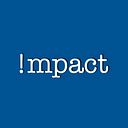
“Family constitutions are one arrow in the quiver in the world of family dynamics. It is not a one-size-fits-all, some families love the process and some don’t. What I always tell families when I work with them is that the deliverable may not be that document: it may not be that family constitution, or that family mission statement, or the family by laws, or whatever the document happens to be. Maybe it is, but to me, the ultimate deliverable is the process itself because that’s where the work gets done and where the value lies.”
I spoke more on Family Governance and Family Constitutions at Opal’s Family Office and Wealth Management West Forum.
“Not enough families do constitutions, but usually they have other ways to memorialize their decision-making process, their governance process. The legal documents — the will, the trust and the foundation governing instrument — are outcomes of that governance process, but they are not the deliverable in the governance process itself. As I said, to me the real deliverable is engaging in that process: going through the hard work of collaborating, talking about what it is that we agree on, what we disagree on and finding a way to come together in a manner that is set down for at least this moment in time. It’s about deciding how we’re going to resolve our differences, how we’re going to make decisions, whether the decision is something huge like the family business or it’s something that to an outsider may seem more mundane, like who gets to redecorate the family vacation home. Let me tell you, that’s where many problems are, in seemingly trivial things.
“When I think about family governance, I tend to approach it from the old journalism ‘who, when, where, why, and how’ point of view. To me, the who of family governance is a really interesting question because the wealth creators often want to be the controlling aspect of the family dynamics, so of course they’re going to be part of the process. Then you think about who else is invited to a seat at the table and often people want their adult children to have a seat at the table. Many times you have a grandmother and grandfather and their son or daughter at the table. But, the next question is: well what about the son’s wife? Does the daughter’s husband get a seat at the table? They’re the so-called ‘outlaws’, do they get a seat at the table? There’s a lot of debate about that because many families say ‘no they’re not blood related so they don’t get a seat at my table’.
“My response to that is to not forget that these ‘outlaws’ are the parents of your grandchildren. Don’t you want them having a seat at the table while you’re discussing who your family is, and what your family stands for? Because if they’re not, they’re going to go home and tell your grandchildren that. Ideally you want everyone, to the extent possible, to be on the same page. You want everyone telling the same story, rowing in the same direction and feeling included. That doesn’t necessarily mean that they need to be invited to all of the sessions, but when you’re discussing your family’s mission, vision, values, when you are crafting your family’s governance structure, when you are deciding how you’re going to make decisions as a family about your philanthropy or about your values, you definitely want them involved, because they’re going to be raising your grandchildren.
“The next question about the who is those grandchildren. At what age do they get invited to a seat at the table? Family meetings are not ‘one and done’. Ideally they’re annual events and depending on how large the family is and how many people are involved, you may want to set up a structure for at what age they’re invited to attend. Maybe you want them to be there at a certain age, but they don’t get a full vote yet. They get to be on the junior advisory board or something, you make them feel important, and give them a seat at the table. Maybe they don’t get to vote on what the ultimate governance structure looks like, but at least they can offer input and they feel heard. Because at the end of the day, if you don’t feel heard then then you are not engaged in the process.”
